Chromosomes Out of Order

Our genetic information is stored in 23 pairs of chromosomes that vary widely in size and shape. Chromosome ane is the largest and is over three times bigger than chromosome 22. The 23rd pair of chromosomes are two special chromosomes, X and Y, that decide our sex. Females take a pair of X chromosomes (46, Xx), whereas males have 1 10 and ane Y chromosomes (46, XY). Chromosomes are fabricated of DNA, and genes are special units of chromosomal Deoxyribonucleic acid. Each chromosome is a very long molecule, so it needs to be wrapped tightly effectually proteins for efficient packaging.
Nigh the middle of each chromosome is its centromere, a narrow region that divides the chromosome into a long arm (q) and a short arm (p). Nosotros can further split the chromosomes using special stains that produce stripes known as a banding pattern. Each chromosome has a distinct banding blueprint, and each band is numbered to help identify a particular region of a chromosome. This method of mapping a gene to a item band of the chromosome is called cytogenetic mapping. For example, the hemoglobin beta gene (HBB) is institute on chromosome 11p15.iv. This means that the HBB gene lies on the short arm (p) of chromosome 11 and is found at the band labeled xv.4.
With the appearance of new techniques in DNA analysis, we are able to wait at the chromosome in much greater particular. Whereas cytogenetic mapping gives a bird'south eye view of the chromosome, more modern methods evidence Deoxyribonucleic acid at a much higher resolution. The Human Genome Project aims to place and sequence the ~30,000 genes in human DNA.
Chromosome 1
-
Contains over 3000 genes
-
Contains over 240 one thousand thousand base pairs, of which ~90% have been determined
-
See the diseases associated with chromosome 1 in the MapViewer.

Chromosome 2
-
Contains over 2500 genes
-
Contains over 240 meg base pairs, of which ~95% take been adamant
-
See the diseases associated with chromosome 2 in the MapViewer.
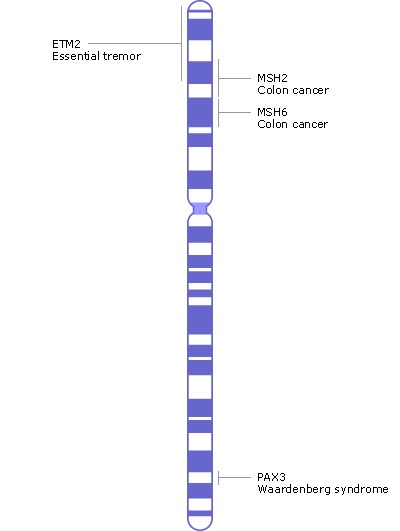
Chromosome 3
-
Contains approximately 1900 genes
-
Contains approximately 200 million base of operations pairs, of which ~95% have been determined
-
Run into the diseases associated with chromosome iii in the MapViewer.

Chromosome four
-
Contains approximately 1600 genes
-
Contains approximately 190 million base of operations pairs, of which ~95% accept been adamant
-
Run into the diseases associated with chromosome iv in the MapViewer

Chromosome 5
-
Contains approximately 1700 genes
-
Contains approximately 180 million base pairs, of which over 95% have been determined
-
Run into the diseases associated with chromosome five in the MapViewer.
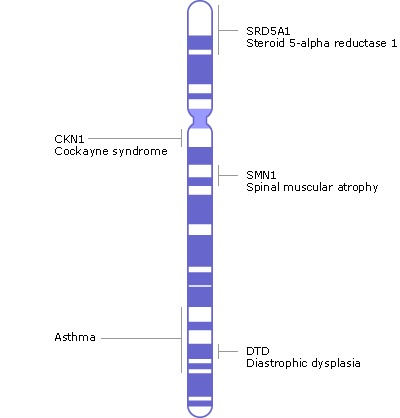
Chromosome half dozen
-
Contains approximately 1900 genes
-
Contains approximately 170 million base pairs, of which over 95% have been adamant
-
See the diseases associated with chromosome 6 in the MapViewer.

Chromosome 7
-
Contains approximately 1800 genes
-
Contains over 150 meg base pairs, of which over 95% have been determined
-
See the diseases associated with chromosome 7 in the MapViewer.

Chromosome 8
-
Contains over 1400 genes
-
Contains over 140 million base of operations pairs, of which over 95% have been determined
-
See the diseases associated with chromosome eight in the MapViewer.
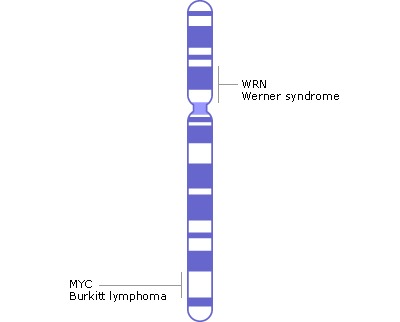
Chromosome 9
-
Contains over 1400 genes
-
Contains over 130 million base of operations pairs, of which over 85% have been determined
-
Encounter the diseases associated with chromosome 9 in the MapViewer.

Chromosome 10
-
Contains over 1400 genes
-
Contains over 130 million base of operations pairs, of which over 95% have been adamant
-
See the diseases associated with chromosome 10 in the MapViewer.
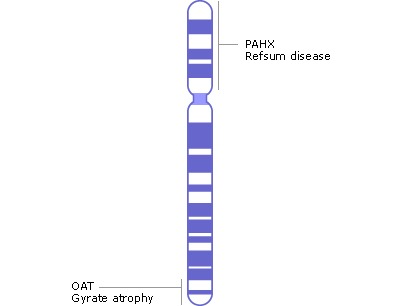
Chromosome 11
-
Contains approximately 2000 genes
-
Contains over 130 million base pairs, of which over 95% take been determined
-
Encounter the diseases associated with chromosome 11 in the MapViewer.
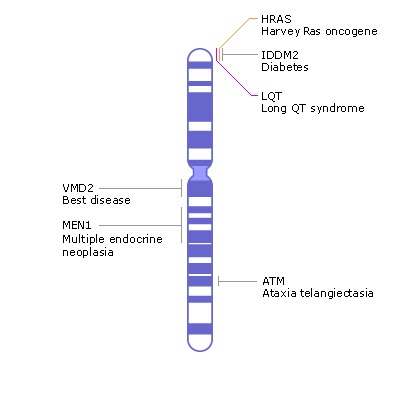
Chromosome 12
-
Contains over 1600 genes
-
Contains over 130 1000000 base pairs, of which over 95% have been determined
-
Meet the diseases associated with chromosome 12 in the MapViewer.
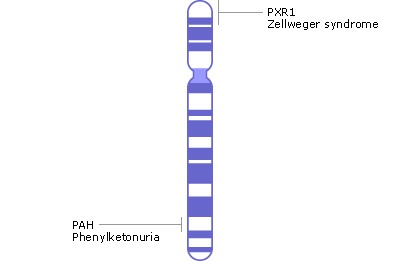
Chromosome 13
-
Contains approximately 800 genes
-
Contains over 110 one thousand thousand base pairs, of which over 80% have been adamant
-
See the diseases associated with chromosome thirteen in the MapViewer.

Chromosome xiv
-
Contains approximately 1200 genes
-
Contains over 100 one thousand thousand base of operations pairs, of which over fourscore% have been determined
-
See the diseases associated with chromosome fourteen in the MapViewer.

Chromosome fifteen
-
Contains approximately 1200 genes
-
Contains approximately 100 million base of operations pairs, of which over 80% have been determined
-
See the diseases associated with chromosome 15 in the MapViewer.
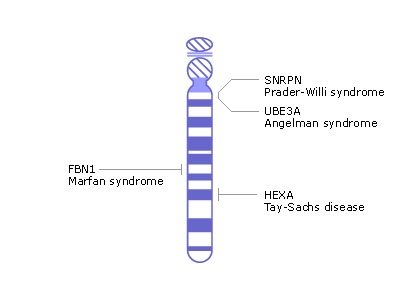
Chromosome sixteen
-
Contains approximately 1300 genes
-
Contains approximately 90 million base pairs, of which over 85% take been determined
-
Run across the diseases associated with chromosome sixteen in the MapViewer.
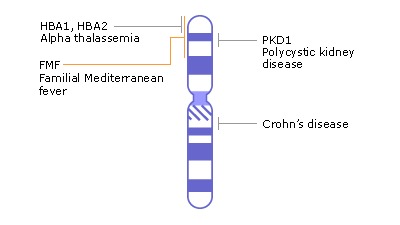
Chromosome 17
-
Contains over 1600 genes
-
Contains approximately lxxx million base pairs, of which over 95% accept been determined
-
See the diseases associated with chromosome 17 in the MapViewer.

Chromosome eighteen
-
Contains over 600 genes
-
Contains over seventy meg base of operations pairs, of which over 95% have been determined
-
Meet the diseases associated with chromosome 18 in the MapViewer.
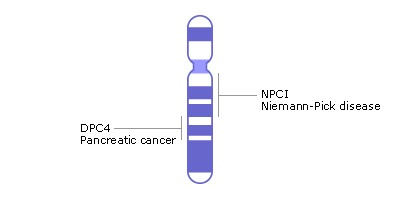
Chromosome 19
-
Contains over 1700 genes
-
Contains over 60 million base pairs, of which over 85% have been adamant
-
Meet the diseases associated with chromosome 19 in the MapViewer.
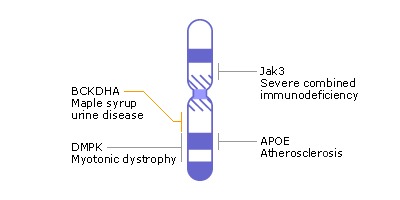
Chromosome 20
-
Contains over 900 genes
-
Contains over 60 million base pairs, of which over 90% have been adamant
-
See the diseases associated with chromosome 20 in the MapViewer.

Chromosome 21
-
Contains over 400 genes
-
Contains over 40 one thousand thousand base pairs, of which over seventy% have been adamant
-
See the diseases associated with chromosome 21 in the MapViewer.

Chromosome 22
-
Contains over 800 genes
-
Contains over twoscore 1000000 base of operations pairs, of which approximately 70% have been determined
-
Come across the diseases associated with chromosome 22 in the MapViewer.
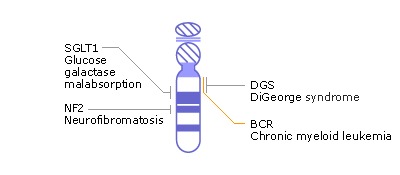
Chromosome 10
-
Contains over 1400 genes
-
Contains over 150 million base pairs, of which approximately 95% have been determined
-
Run into the diseases associated with chromosome X in the MapViewer.

Chromosome Y
-
Contains over 200 genes
-
Contains over 50 million base pairs, of which approximately 50% have been determined
-
Run into the diseases associated with chromosome Y in the MapViewer.
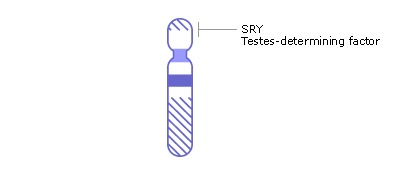
Source: https://www.ncbi.nlm.nih.gov/books/NBK22266/
0 Response to "Chromosomes Out of Order"
Post a Comment